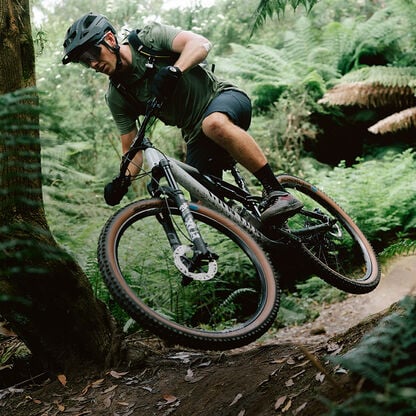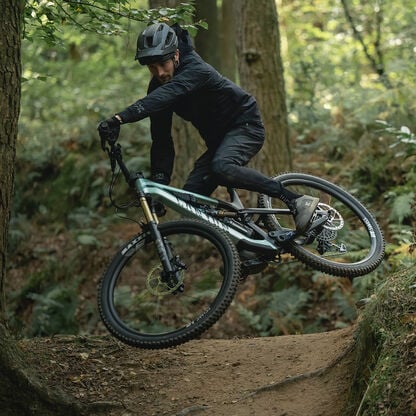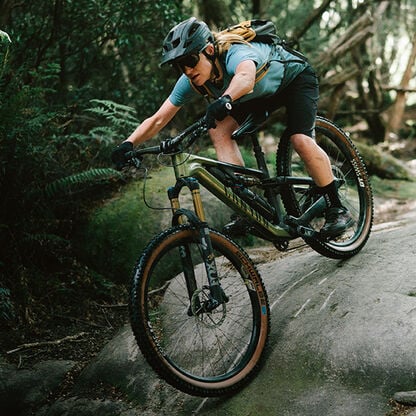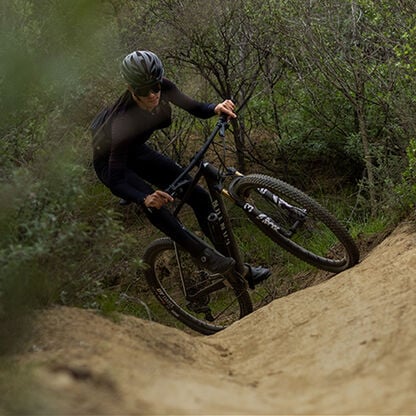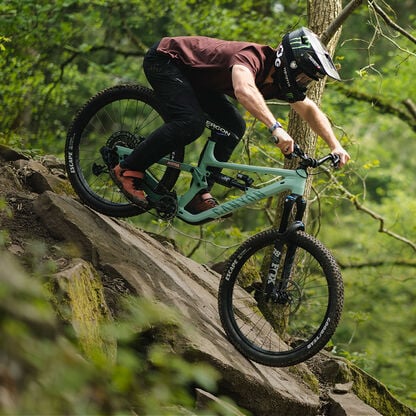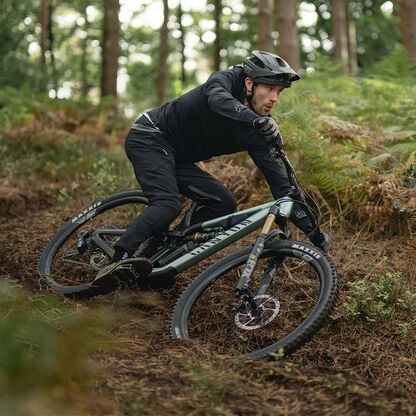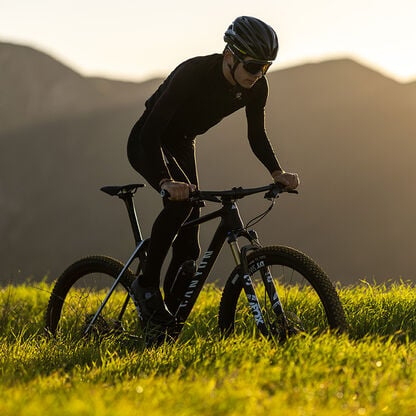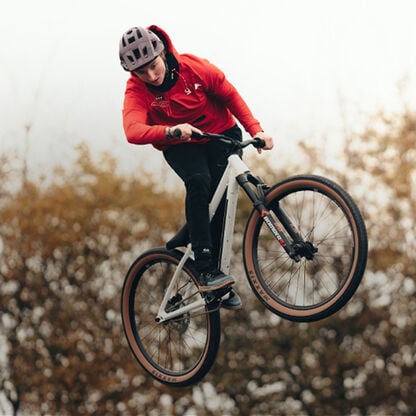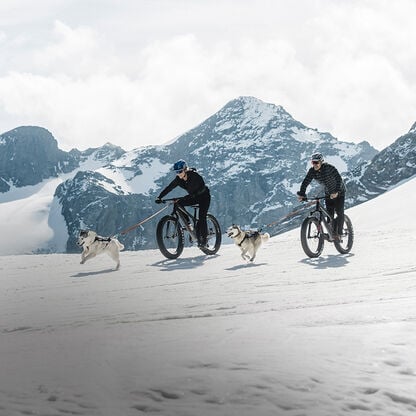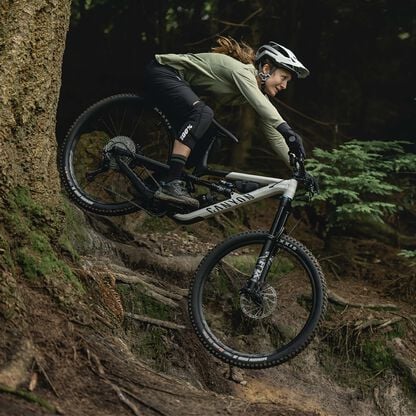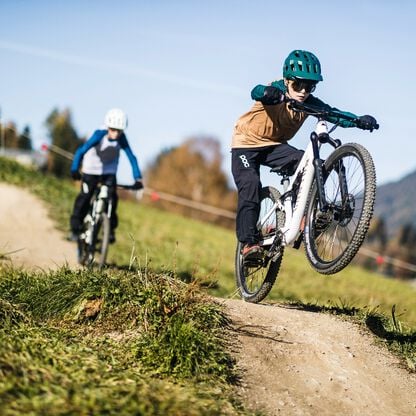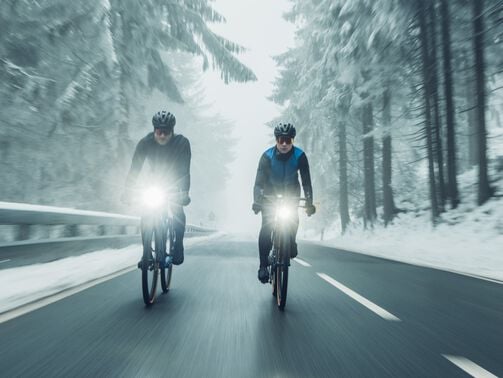Spectral or Strive: Which is better for you?
Spectral vs Strive? While these bikes may not look too different at first glance, they are very different bikes, designed for very different missions: it’s all about the details. This short guide will hopefully help you decide which one is right for you.

“An enduro race machine and an aggressive trail bike, a play bike.” That is how 2-time DH World Champion Fabien Barel explains the differences between the Spectral and the Strive. ‘What is the difference between a trail bike and an enduro bike?’ is one of the most asked questions in mountain biking. Canyon’s Strive enduro bike and Spectral trail bike represent the two sides of this coin. While on paper these bikes might look quite similar, they are designed for very different riders.
Contents
Understanding Geometry: Spectral vs. Strive Differences
Geometry is all about the riders connection to the bike and the trail, so although there are some small differences, there are fewer than many people might expect and a rider’s level of experience has a bigger impact than how the bike will be ridden. Because both mountain bikes are aimed at advanced riders they share many of the same geometry numbers. Core to Canyon’s philosophy are long reach and a low bottom bracket, so these are identical on both bikes. Then stack, head angle and seat angle are pretty consistent across both bikes too. There are a few minor differences, the Spectral has slightly longer chainstays in 29-inch wheel mode, but slightly shorter for the mullet (27.5 rear wheel) setup. Generally, riders opting for the 29-inch models of the Spectral are looking to cover ground more effectively, while those going for the mullet are looking for the fastest-handling bike possible and this difference is reflected in the chainstay length.
Suspension Dynamics: Strive vs. Spectral Contrasts
It is in the suspension where you can find the biggest differences between these two bikes. Quite simply, the Strive has more of it with a 170mm fork and 160mm at the rear. The carbon fibre Spectral has a 150mm fork and 140mm rear travel and the aluminium version has a 160mm fork and 150mm rear travel. “When you have the front travel that slightly longer than the rear, as you do the Spectral, and even more when you go to the Strive, this sets the dynamic sag based on the usage,” explains Barel “For our bikes designed for advanced riders, like the Strive and Spectral, this dynamic sag puts the centre of gravity towards the rear because normally you ride steeper trails than less experienced riders.”
“The Spectral could be set up to be efficient for racing, but it's mainly a bike that will be excellent to pop, carry a good speed, and generate speed to pop out jumps and play on the trails,” continues Barel. “The Spectral is the more progressive bike, where the kinematic of the Strive has more of a platform at mid-stroke for carrying speed. On the Strive you will find it very plush at the beginning, with good mid-stroke support and then very progressive on the last third of the travel just to avoid bottom out, but just to avoid bottom out.”
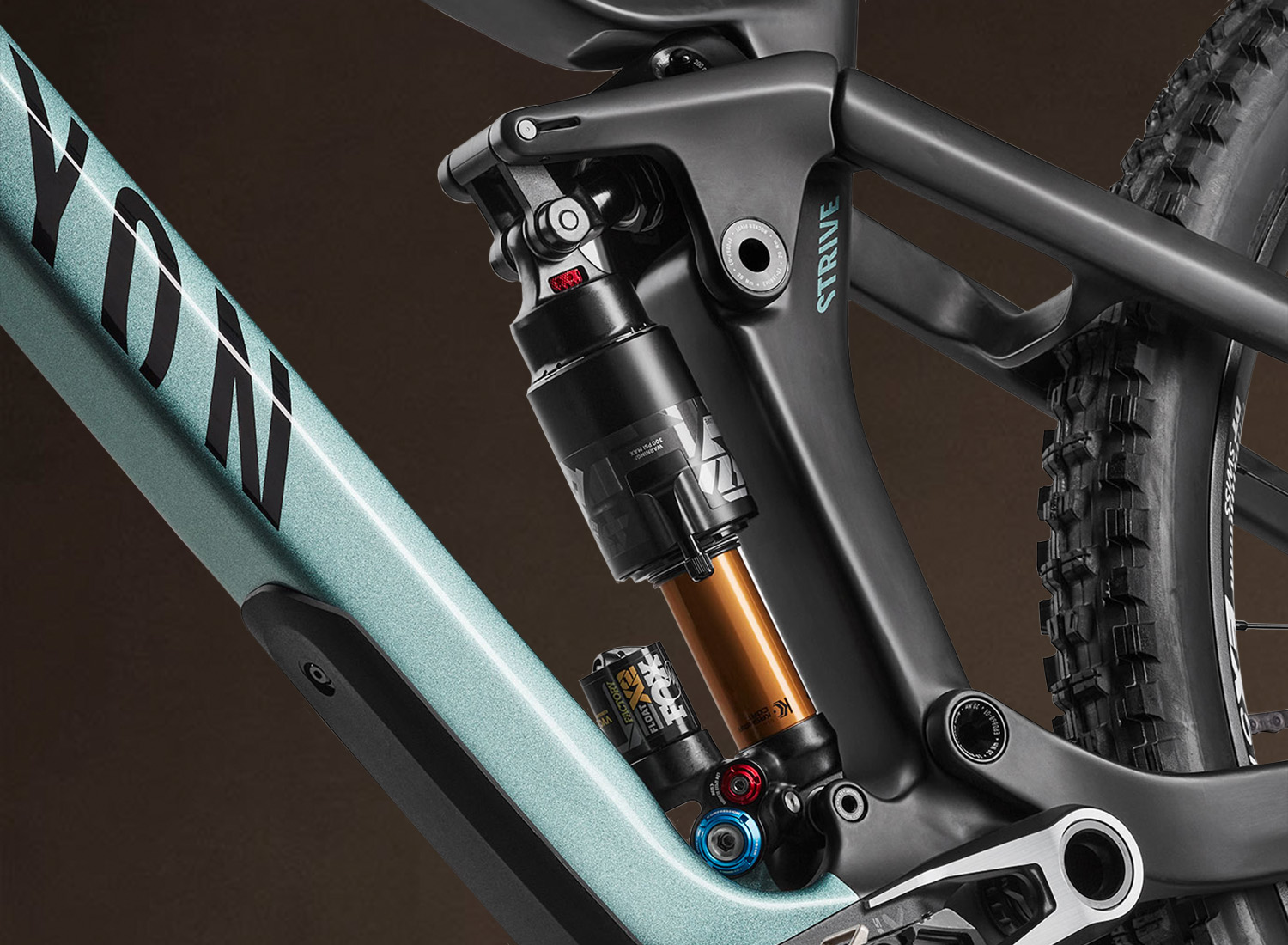
Frame Design Comparison
As a race bike, the Strive is carbon fibre only. Carbon mountain bikes are lighter and more adaptable to help you go as fast as possible. Built for a wider range of riders and riding styles, the Spectral is available in both carbon and aluminium. The aluminium mountain bikes are a little heavier and don’t share some of the same technology, but that means they are more affordable for riders who prioritise budget over all-out performance.
How hard you intend to push your bike could be a major deciding factor between these two bikes. The Spectral meets the ASTM category 4 rating. This means it is designed for hard riding, maybe even a little bikepark, but if you go on really extreme trails you are pushing the bike beyond what it was designed for. Having the ASTM category 5 rating means that the Strive can tackle the same kind of trails you would on a downhill or freeride bike - it is designed for the hardest most demanding trails you can find. This difference also means that the Spectral will always be a little lighter than the Strive, as easier riding demands less frame reinforcement.
Technology Overview: Spectral vs Strive Innovations
You can see the difference in intent for these two bikes in the technology included. The Strive is completely race-focused. Shapeshifter technology turns a bike designed for downhill speed into an efficient climber at the flick of a switch. This prioritises pedaling efficiency over riding experience, reducing the travel, shortening the wheelbase and raising the bottom bracket - because in an enduro race, the climb isn’t the fun part of the ride, it is what you do to get to the next descent. There is also has the option of two adjustable headsets, so you can fine-tune the fit and handling of your bike. One headset offers 0.5 degrees of head angle adjustment and the other offers +/- 5mm of reach adjustment giving you a range of options to set your bike to suit your needs.
The carbon fibre version of the Spectral features the innovative K.I.S. system, to keep the steering more stable to help you get maximum fun from the trail. There is downtube storage in the frame, so you can carry some spares, tools or food with you to help you stay out longer. It also includes a flip chip so you can raise the bottom bracket by 8mm and steepen the head angle by 0.5 degrees, for riders who are looking for a more neutral trail bike. Although the aluminium versions of the bike do not share these same features because carbon fibre allows for more complex construction to house them.

Component Comparison: Spectral vs Strive Specifications
Both bikes share very similar builds, with Canyon’s in-house G5 bars and stems, long dropper posts, capable suspension and sticky Maxxis Exo+ tyres making the bikes ready for action straight out of the box. Going deeper into the components, you can see how much more focused the Strive is. Every Strive model features race-ready wheelsets, designed to survive the rigours of enduro racing and more. For the Spectral, the wheelsets are a little lighter and they are offered at lower pricepoints because trail riding is usually less demanding on your wheels.
It is a similar story with suspension, each Strive has high-end suspension with adjustment to prepare it for whatever race track you are facing. This comes at a price, so to make the Spectral available for more riders it is offered with slightly less burly, yet less adjustable suspension like the lighter Fox 36 and Rockshox Lyrik, rather than the sturdier 38 or Zeb.
How to make a decision?
As a key part of the development team for both bikes, Barel puts it very succinctly: “The Strive is there to absorb the big hits, to have maximum grip and has a chassis with the same norm as a DH bike, so you can ride on the bike park with it. You can hit the trails and the rough stuff like a mini DH bike. The Spectral is a bike that is poppy, that is demanding. It's for pro-amateur riders that are dedicated to fun and not to speed.”
The Spectral is more than up to the occasional enduro race, but if it is what you are riding every weekend, then the Strive would be the natural choice. If you are riding with friends or just exploring trails, the Spectral is likely to be a better match for you. If budget is your main decider, then the Spectral is available in more affordable builds.

Discover our Mountain Bikes
Did this article help?
Thank you for your feedback
-
 About the author
About the authorMatt Wragg
Get to know Matt Wragg, the freelance photographer, writer, and self-proclaimed bicycle-breaker based in Nice, France. Despite unsuccessful attempts at XC, trials, 4X, and DH racing, Matt's passion for mountain biking never waned. After a stint in communications consulting, he decided to pursue his love for cycling and moved to New Zealand. Since then, he has traveled the world, chasing trails and building a successful career as a cycling photographer and writer. In 2021, he was diagnosed as autistic and has been coming to terms with it. His bike cellar is a true testament to his love for cycling, housing bikes that range from freeride to cargo.
